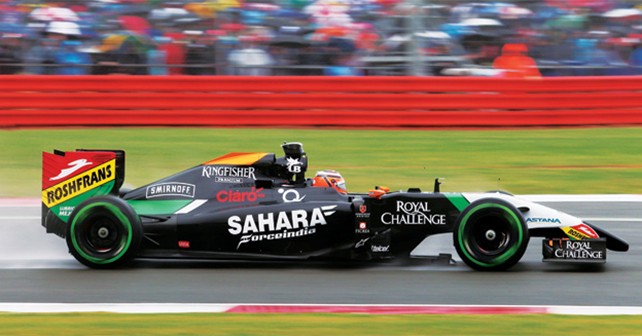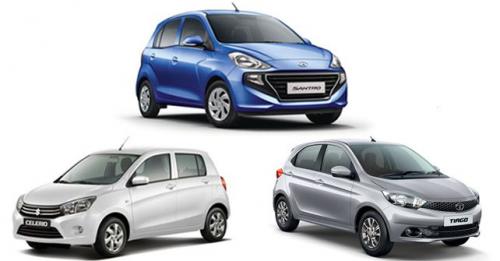I usually try and use worldly examples to explain, and simplify, the complex world of Formula 1. But, this time, I’m at a loss of words – let alone examples. The sport is embroiled in an unspoken downward spiral, not only in terms of TV viewership, but also in terms of technical regulations. But what hasn’t changed are the frequent rule changes mid-season. Yes, you read that right – mid-season! Imagine you’re running a marathon, and your running shoes – which had passed a pre-race check – were deemed ‘illegal’ mid-race.
The FRIC (Front-Rear Inter Connected, suspension that is) ban is certainly more complex than that. Versions of system have been around for decades, and they’ve been improved and perfected in typical F1 style (meaning millions of dollars have been spent) with every passing year. And if money matters don’t concern the powers that be, it would be foolish to expect them to think about the fans – right?
The complexity stems from the fact that FIA’s permanent race starter, Charlie Whiting, has found the FRIC suspension system to be illegal – but the FIA is yet to ban it. They’ve left it to the teams to decide on whether the ban ought to be immediate or from the 2015 F1 season. And history has proven that the teams rarely have a unanimous agreement. Add to that the technical complexity of a system that sounds like a dream if you’re a racer or a fan who understands vehicle dynamics.
Another question arises about the timing of the ban. The FIA was aware of the utilisation of FRIC since the start of the season, but it was only after one of the teams (reportedly) complained that a warning was issued following the British Grand Prix last month. What I’m getting at is the fact that I’ve followed Formula 1 for long enough to wonder if there’s a hidden agenda behind this ban. Is it to slow down the Mercedes juggernaut? Will this, then, improve the ‘show’ and bring back TV viewers if the gap between the Mercedes machines and the rest is reduced?
I often wonder if there’s a deeper nexus involved in staging a good show, as opposed to allowing a fair-fight to run its course – even if it’s one-sided for a certain period of time. The counter-view, of course, is that the teams can be blamed as they’ve developed and invested in a system that they knew all along was illegal.
This makes me wonder if F1 is taking their engineering to a point where it’s driving fans away? I’ve been hooked for decades, and don’t see what’ll make me stop following and writing on the sport. But I’m no longer the TG. Reports indicate that younger audiences just don’t find the sport cool enough – which is difficult to believe since watching cutting-edge machines racing wheel-to-wheels is my definition of cool. After all, most kids cherish their car collections when they’re growing up – don’t they?
So, is there a series out there that can capitalise on the mistakes being made by F1 and attract the audiences that F1 is apparently driving away? Well, perhaps if that series focused more on racing than engineering? And this is where I think there’s a strong case to be made for Formula E – the FIA’s latest venture in the world of electric car racing, also the world’s first such global attempt.
The series, which debuts in September, seems to have the right mix of single make cars, former F1 drivers, celebrity and entrepreneur owners, and races organised on city roads. Fans often wonder what would it be like to see Alonso vs. Vettel vs. Hamilton in equal cars, and Formula E could offer just that in a few years to come. If it establishes itself as a credible series, I don’t see why top motorsport talent wouldn’t want to drive in it. And if it does that well enough, I shall pen separate F1 and FE columns for autoX!
Yes, I’m aware that engine sound is conspicuous by its absence. But when Nico and Lewis went head-to-head in Bahrain, did we really miss engine sound? Even though I am a strong proponent of the correct sound, perhaps it’s time to adapt for the new-age of motorsport fans – before it’s too late!
It’s too early to talk about Formula E as a replacement for F1, given that it’s yet to see its first set of green lights – not to mention that Formula 1 has been around for over sixty years, and is by far the world’s best marketed motorsport series. But I’m certainly going to keep a close eye on it to see how it all unfolds – and hopefully it’ll all be for the betterment of the fans and the sport.
Talking about good combinations and bad ones, it seems that Raikkonen and Ferrari don’t seem to mix particularly well in 2014. There are rumours already that Ferrari may be looking to replace the Finn in 2015, which would be a disappointment for fans like me who still wish to see a classic Alonso vs. Raikkonen battle before either of them hang up their boots. However, it’ll be interesting to see who Ferrari replaces the iconic Finn with. Will it be Hulkenberg, who they strongly considered for 2014, or will they take the plunge and give the much-deserving Bianchi a call? Either way, I expect the 2015 driver market to be more spicy than the Mercedes vs. the rest battle of 2014.
And maybe Raikkonen isn’t the only former world champion whose place is under threat. Jenson Button and McLaren are yet to announce their extension for next season – will McLaren let go of the experienced British driver in favour of a younger one? There’s still much to play for this season it seems. Let’s hope things change for the better in the second half of the season.
Read Kunal’s views at his F1 blog.

























Write your Comment